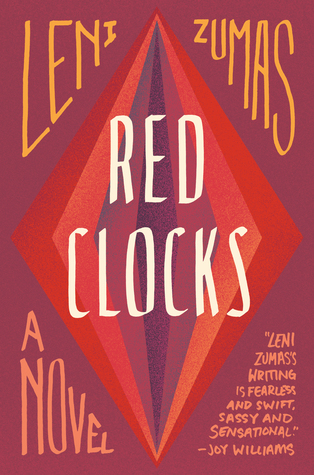
News
Summers Will Not Finish Semester of Teaching as Harvard Investigates Epstein Ties

News
Harvard College Students Report Favoring Divestment from Israel in HUA Survey

News
‘He Should Resign’: Harvard Undergrads Take Hard Line Against Summers Over Epstein Scandal

News
Harvard To Launch New Investigation Into Epstein’s Ties to Summers, Other University Affiliates

News
Harvard Students To Vote on Divestment From Israel in Inaugural HUA Election Survey
‘Red Clocks’: A World Too Close for Comfort
3.5 Stars

In an all too real dystopian world, “Red Clocks” by Leni Zumas explores four women’s lives when abortion, adoption by a single parent, and in vitro fertilization are illegal in the United States. The women are often referred to not by name, but rather by their relationship to men: the wife, the daughter, the mender, and the biographer. Interwoven among these present day accounts are excerpts from a biography about a woman whose scientific work is not properly recognized. These sections detract from the work as a whole because Zumas’ strongest work describes how women’s lives could be disrupted with laws that restrict women’s rights. Although the novel sends a powerful message, at moments Zumas makes style choices that ultimately detract from the novel.
The book begins in none other than “a room for women whose bodies are broken”: the waiting room for the gynecologist. The biographer is waiting to be artificially inseminated, again, in the hopes that she will be able to raise a child. This is her last hope, as a new law rules that she cannot adopt a child without a partner. The biographer also deals with challenges many single women face today. A therapist once asked if the biographer was “claiming not to need a romantic relationship in order to shield [herself] from disappointment and rejection?” Zumas perfectly displays the despair the biographer feels at not being able to conceive, while also showcasing the questions single women must constantly answer. These are not “what if”’s but rather real life examples.
“Red Clocks” seems to take a strong stance on abortion, but of course it would be nearly impossible to write a novel with this premise and remain unbiased. The daughter, only fifteen years old, is pregnant and is willing to do anything to not be. She herself was adopted and doesn’t want her baby to wonder why they were given up, but she also realizes raising a child will drastically change her life. The daughter tells the biographer, “I just want it out of my body. I want to stop being infiltrated.” It is here that Zumas does an excellent job of showing both sides of the spectrum: those who want nothing more than a child they can’t have and those who are not ready for such a big commitment.
The other two main characters, the wife and the mender, further explore the many roles that women have in the world. The mender uses herbs to heal and mend, as well as terminate pregnancies. She is put on trial for just that, but furthermore is criticized by the community for being a woman who lives a solitary life. The wife has a husband and two children, but is just as unhappy as the other women. In a marriage with no problem except for a lack of love, Zumas provides an illuminating example of an unhappy woman with a seemingly perfect life. Within these four stories, Zumas shows the many dimensions of women in society.
Unfortunately, Zumas attempts to do one thing too many with the excerpts from the biographer’s novel-in-progress. While short in length, a new excerpt follows each chapter. They often break the flow of the story but add nothing to the overall narrative. The biographer often summarizes her novel, so no new information is provided within the excerpts.
In a world not so different from today’s, Zumas paints a picture that includes women living a less fulfilling life. In framing a dystopia that is caused not by some catastrophic event but rather the passing of a law, the suffering of the characters feels more real and more terrifying. “Red Clocks” is a story that has the power to make its reader enraged, despondent, and scared.
Want to keep up with breaking news? Subscribe to our email newsletter.
